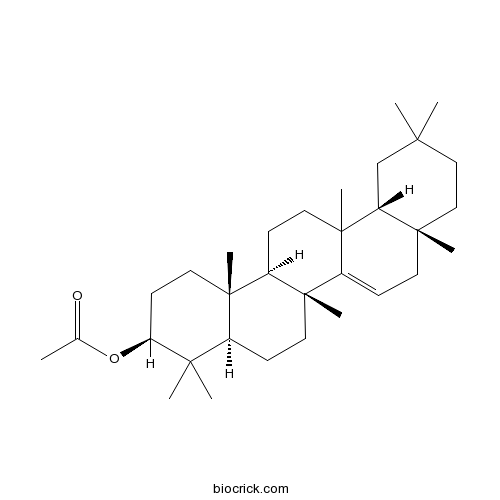Lannea coromandelica
Lannea coromandelica
1. The products in our compound library are selected from thousands of unique natural products; 2. It has the characteristics of diverse structure, diverse sources and wide coverage of activities; 3. Provide information on the activity of products from major journals, patents and research reports around the world, providing theoretical direction and research basis for further research and screening; 4. Free combination according to the type, source, target and disease of natural product; 5. The compound powder is placed in a covered tube and then discharged into a 10 x 10 cryostat; 6. Transport in ice pack or dry ice pack. Please store it at -20 °C as soon as possible after receiving the product, and use it as soon as possible after opening.
Natural products/compounds from Lannea coromandelica
- Cat.No. Product Name CAS Number COA
-
BCN4937
Taraxeryl acetate2189-80-2
Instructions

Carbohydrate dynamics of three dominant species in a Chinese savanna under precipitation exclusion.[Pubmed: 29474710]
The potential impact of drought on the carbon balance in plants has gained great attention. Non-structural carbohydrate (NSC) dynamics have been suggested as an important trait reflecting carbon balance under drought conditions. However, NSC dynamics under drought and the response mechanisms of NSC to drought remain unclear, especially in water-limited savanna ecosystems. A precipitation exclusion experiment was performed to simulate different drought intensities in a savanna ecosystem in Yuanjiang valley in southwestern China. Growth, total NSC concentration and diurnal change of NSC were determined for the leaves and non-photosynthetic organs of three dominant species (Lannea coromandelica, Polyalthia cerasoides and Heteropogon contortus) throughout the growing season. Drought significantly reduced the growth of all the three species. Total NSC concentration averaged ~8.1%, varying with species, organ and sampling period, and did not significantly decrease under drought stress. By contrast, the diurnal change of NSC in these three species increased under drought stress. These results indicate that these three dominant species did not undergo carbon limitation. Thus, relative change in NSC is a more sensitive and effective indicator than carbon reserves in evaluation of plant carbon balance. These findings provide new insights for the understanding of carbon balance and the mechanisms of carbon starvation.
Lannea coromandelica (Houtt.) Merr. Induces Heme Oxygenase 1 (HO-1) Expression and Reduces Oxidative Stress via the p38/c-Jun N-Terminal Kinase-Nuclear Factor Erythroid 2-Related Factor 2 (p38/JNK-NRF2)-Mediated Antioxidant Pathway.[Pubmed: 28146074]
None
Induction of apoptosis in human hepatocellular carcinoma cells by extracts of Lannea coromandelica (Houtt.) Merr. and Diospyros castanea (Craib) Fletcher.[Pubmed: 27110278]
Herbal plants are a preferred source of anticancer agents. This study aims to screen the anticancer activity of a crude extract of twigs of (a) Bombax anceps Pierre var. anceps (BA); (b) Catunaregam tomentosa (Blume ex DC.) Tirveng. (CT); (c) Erythrophleum succirubrum Gagnep. (ES); (d) Lannea coromandelica (Houtt.) Merr. (LC); and (e) leaves and (f) twigs of Diospyros castanea (Craib) Fletcher (DC).
Appraisal of Total Phenol, Flavonoid Contents, and Antioxidant Potential of Folkloric Lannea coromandelica Using In Vitro and In Vivo Assays.[Pubmed: 26457224]
The aim of this study was to determine the impending antioxidant properties of different extracts of crude methanolic extract (CME) of leaves of Lannea coromandelica (L. coromandelica) and its two ethyl acetate (EAF) and aqueous (AqF) subfractions by employing various established in vitro systems and estimation of total phenolic and flavonoid content. The results showed that extract and fractions possessed strong antioxidant activity in vitro and among them, EAF had the strongest antioxidant activity. EAF was confirmed for its highest phenolic content, total flavonoid contents, and total antioxidant capacity. The EAF was found to show remarkable scavenging activity on 2,2-diphenylpicrylhydrazyl (DPPH) (EC50 63.9 ± 0.64 µg/mL), superoxide radical (EC50 8.2 ± 0.12 mg/mL), and Fe(2+) chelating activity (EC50 6.2 ± 0.09 mg/mL). Based on our in vitro results, EAF was investigated for in vivo antioxidant assay. Intragastric administration of the EAF can significantly increase levels of superoxide dismutase (SOD), catalase (CAT), glutathione (GSH), and glutathione peroxidase (GSH-Px) levels, and decrease malondialdehyde (MDA) content in the liver and kidney of CCl4-intoxicated rats. These new evidences show that L. coromandelica bared antioxidant activity.


